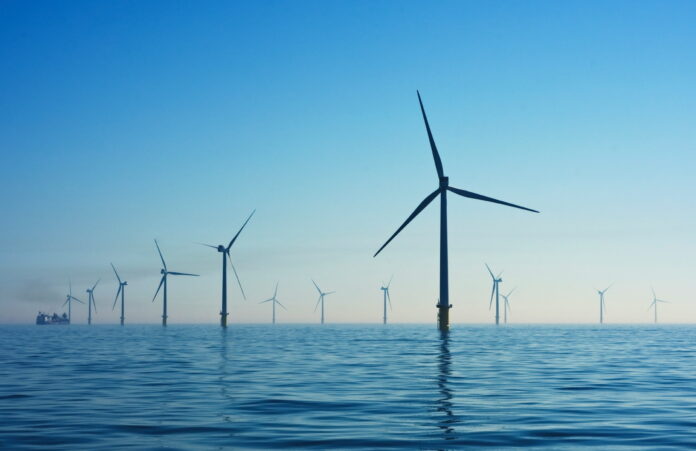As the world intensifies its efforts to combat climate change, offshore wind power is emerging as a revolutionary force in the renewable energy sector. With its immense potential and rapidly evolving technology, offshore wind is set to play a pivotal role in the transition to sustainable energy.
Harnessing the Power of Ocean Winds
Offshore wind energy involves the installation of advanced wind turbines in marine environments to exploit the stronger and more consistent winds found at sea. These installations are categorized into two main types based on water depth:
- Fixed-Bottom Turbines: These are anchored to the seabed in shallow waters and are commonly used in areas with a water depth of up to 60 meters. For example, the London Array in the UK, one of the largest offshore wind farms, utilizes fixed-bottom turbines.
- Floating Turbines: These turbines are anchored to floating platforms and can operate in deeper waters where fixed-bottom turbines are not feasible. The Hywind Scotland project, for instance, demonstrates the potential of floating turbine technology.
Recent technological advancements, such as floating platforms and improved turbine designs, are expanding the viability of offshore wind farms into previously inaccessible areas.
Advantages of Offshore Wind Energy
Offshore wind energy offers several significant benefits:
- Higher Capacity Factor: Offshore turbines typically experience stronger and more consistent winds compared to their onshore counterparts. This results in a higher capacity factor, which means they generate more electricity consistently.
- Reduced Land Use Conflicts: By utilizing ocean space, offshore wind farms minimize the pressure on land resources and reduce visual impacts. This helps avoid land use conflicts and preserves valuable land for other purposes.
- Economic Growth: The offshore wind industry is a significant driver of job creation in coastal and maritime regions. It stimulates local economies and contributes to job growth in these areas.
- Enhanced Grid Stability: When integrated with other renewable energy sources, offshore wind farms can improve overall grid reliability. They provide a stable power supply that complements intermittent sources like solar power.
Challenges Facing Offshore Wind Energy
Despite its advantages, offshore wind energy faces several challenges:
- High Initial Costs: The installation and maintenance of offshore wind farms are more expensive than onshore projects due to the harsh marine environment. Initial investment costs for offshore wind projects are generally higher compared to onshore farms.
- Infrastructure Needs: Connecting offshore wind farms to the grid requires substantial undersea cabling and onshore infrastructure. The development of undersea infrastructure is crucial for integrating these farms into the electricity grid.
- Environmental Concerns: The impact on marine ecosystems must be carefully managed to avoid adverse effects. Conducting thorough environmental assessments is essential to mitigate potential environmental impacts.
Leading Countries in Offshore Wind Energy: Innovations and Progress
Several countries are at the forefront of offshore wind development:
- United Kingdom: The UK has the largest offshore wind market in the world and aims to power every home with wind energy by 2030. The UK’s offshore wind targets are among the most ambitious globally.
- Germany: Germany has made significant advancements in offshore wind with extensive developments in the North Sea. The country is focusing on new projects to increase its offshore wind capacity.
- China: China is rapidly expanding its offshore wind capabilities with substantial investments in new technologies and projects.
- United States: Although a relative newcomer, the US has set ambitious targets for offshore wind development along its East Coast. The Biden administration is committed to boosting offshore wind projects significantly.
Riding the Wave of Innovation
The future of offshore wind looks promising, with ongoing innovations and cost reductions making it increasingly competitive with fossil fuels. Key advancements include:
- Floating Turbine Technology: Technological advancements are enabling floating wind turbines to operate in deeper waters, expanding the potential locations for offshore wind farms.
- Green Hydrogen Integration: There is growing interest in using excess power from offshore wind farms to produce green hydrogen, which could further enhance the sustainability of the energy system.
What This Means for You
The expansion of offshore wind energy could have significant implications for various stakeholders:
- Coastal Regions: These areas may benefit from lower electricity costs and new job opportunities. The development of offshore wind projects can stimulate local economies.
- Investors: The offshore wind sector presents exciting investment opportunities. The growing focus on renewable energy can offer lucrative returns for investors.
- Climate Action: Offshore wind plays a crucial role in reducing carbon emissions and supporting climate goals. Its expansion is essential for achieving global climate targets and advancing sustainability.
As we look to the future, offshore wind is poised to become a cornerstone of the global energy mix. By harnessing the power of ocean winds, we’re not just generating electricity – we’re paving the way for a cleaner, more sustainable future for generations to come.

